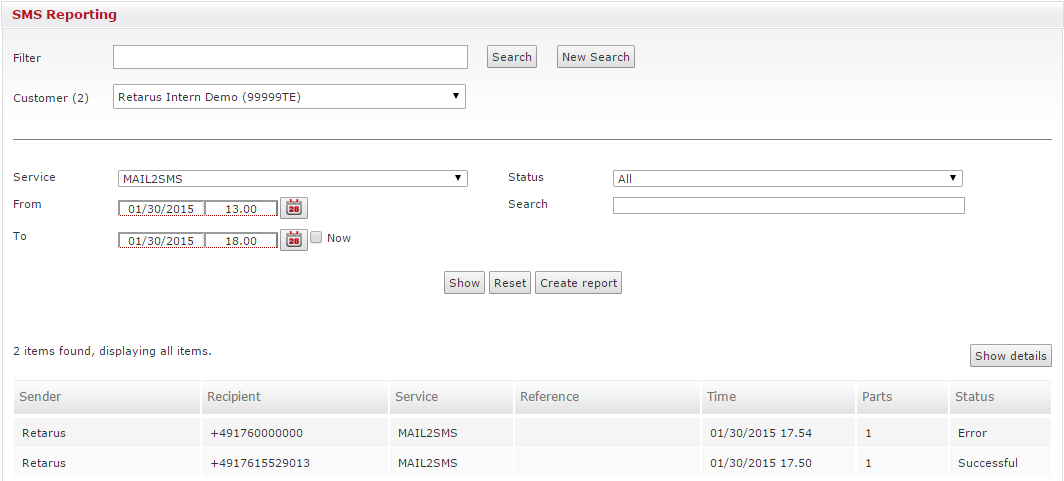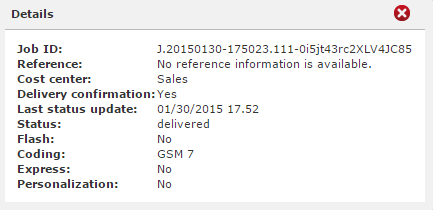Classic EAS
SMS Reporting is located in the EAS portal navigation menu under Reports.

The following table explains the search parameter fields as well as the Parts column in the results table:
Field/column | Description |
|---|---|
Service | You can search for messages sent using all services, or narrow your search to just one service. |
From/To | You can define a search time frame using these fields. |
Status | You can search by message status- the options are All, Successful, and Error. The option you select is also displayed on the right-hand side of the results table. |
Search | Free-text search function. |
Job ID | Unique identifier for a message job. Can also be found in the receipt confirmation email (see Status Requests). |
Parts | Informs you how many parts the message was sent in. When a GSM-7 message exceeds 160 characters, or a UTF-16 message 70 characters, it will be greater than “1”. |
Additional details for a job can be retrieved by clicking on the corresponding line in the table and clicking on Show details, which is found just above the right-hand side of the table. The Details popup window appears:

The following table explains the significance of the fields found in the Details pop-up window:
Field | Description |
|---|---|
Job ID | The unique identifier of the SMS job. |
Reference | Reference information for the SMS job. |
Cost center | Indicates which cost center the SMS was sent under. |
Delivery confirmation | Indicates whether delivery confirmation was used. The actual status of the job is found in the Status field. |
Last status update | Indicates when the last status update was made. |
Status | Indicates the job’s status. |
Flash | Indicates whether the flash function was used when the message was sent. |
Coding | Indicates which coding the SMS was sent in. |
Express | Indicates whether the message was sent via express. |
Personalization | Indicates whether the SMS contains personalization fields. |
